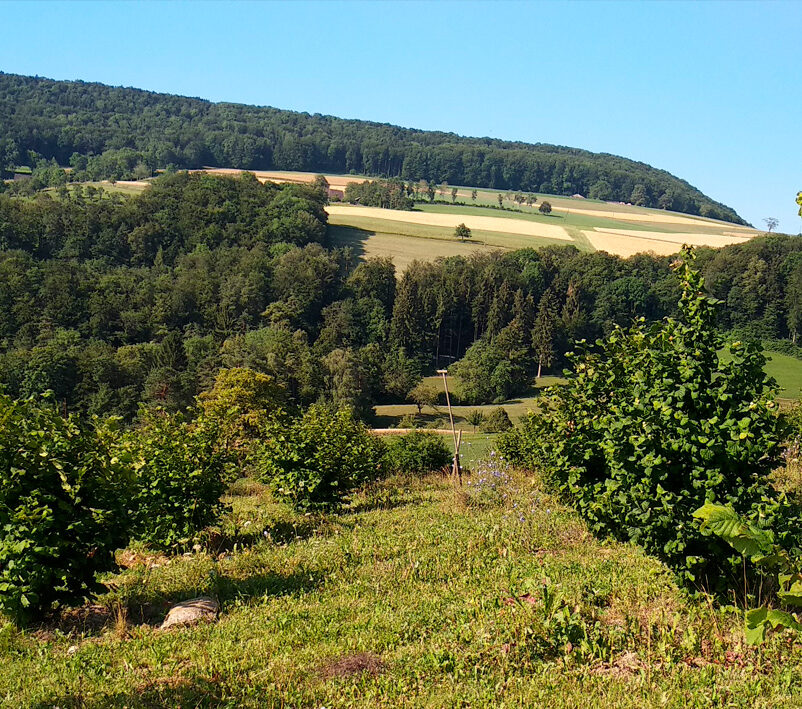The study highlights the importance of habitat, ecological succession status and agricultural management on the structure of fungal communities associated with truffles.
A study led by the Mycology and Trufficulture research group of the Center for Forest Science and Technology of Catalonia (CTFC), the University of Lleida (UdL) and the Swiss research center Swiss Federal Research Institute (WSL), published in the scientific journal Fungal Biology, sheds light on soil fungal communities in truffle-producing habitats, providing new information on the diversity and composition of fungi in these unique ecosystems.
Black and summer truffles (Tuber melanosporum and Tuber aestivum respectively) are known and appreciated for their high gastronomic value.
Until now, little was known about the soil fungal communities associated with these truffle species in places where both species coexist. Research teams led by CTFC and UdL together with WSL, have studied the fungal communities present in areas where black truffle and summer truffle coexist depending on their habitat (wild or plantation) and climatic region (Mediterranean or temperate) in locations in Spain and Switzerland, during three sampling periods (2018-2019).
The results of the study show that both the composition of the soil fungal community and the fungal species present are influenced by habitat type (agricultural or wild) and not by climatic regions. That is, the fungal communities were more similar in plantation areas (even if one plantation was Mediterranean and dominated by oak and another plantation outside the temperate zone and with hazel as the main species), than in plantations and wilderness in the same climatic region (in plantation and Mediterranean wilderness, for example, both having oak as the main species and the same climate).
The results suggest that, possibly, the cultivation history and agricultural management of the plots and the ecological succession of the fungi associated with their habitat (wild or plantation) are the main drivers of fungal community structure in summer truffle and black truffle zones. On the other hand, several species of the genus Tuber, to which the truffle belongs, were found among the most abundant fungal species in plantation areas. However, in the wild zone, with more ecologically advanced fungal communities (due to the age of the ecosystem), these species of colonizing fungi (those belonging to the genus Tuber) were not the most abundant.
The study also revealed that truffle plantations showed less diversity of ectomycorrhizal fungi, i.e. those fungi that perform a symbiosis with the host tree exchanging nutrients for their development and survival; compared to wild sites. However, when the global fungal community was analyzed, including all types of fungi (saprophytes, pathogens, ectomycorrhizal, etc.), the temperate areas of Switzerland (agricultural and wildland area) presented more diversity of fungal taxa than the Mediterranean areas of Spain.
“These findings provide relevant information for the management of truffle-producing ecosystems. The effect of agricultural soil management not only promotes the proliferation of truffles inoculated in the plantation (T. melanosporum and T. aestivum), but also benefits other species of the Tuber genus, possibly due to their colonizing character” explains Yasmin Piñuela, first author of the article and researcher at CTFC.
The main conclusion of the study is that the structure of fungal communities associated with ecosystems where black truffle and summer truffle coexist is mainly influenced by habitat, rather than climate or type of host tree. This highlights the importance of considering the state of ecological succession of the ecosystems in future studies of fungal communities associated with truffles.
The study was carried out within the framework of the Black Dynamite project, with the participation of CTFC, the University of Lleida, the JRU CTFC-Agrotecnio-CERCA, the Swedish University of Agricultural Sciences, the Swiss Federal Research Institute (WSL), the University of Cambridge, the Czech Globe Research Institute CAS and Masaryk University Brno, the European Mycological Institute (EMI), and the Centro de Investigación y Tecnología Agroalimentaria de Aragón (CITA).
Further information:
Piñuela, Y., Alday, J. G., Oliach, D., et. al. Habitat is more important than climate for structuring soil fungal communities associated in truffle sites. Fungal Biology (2024) https://doi.org/10.1016/j.funbio.2024.02.006
Last modified: 23 October 2024










